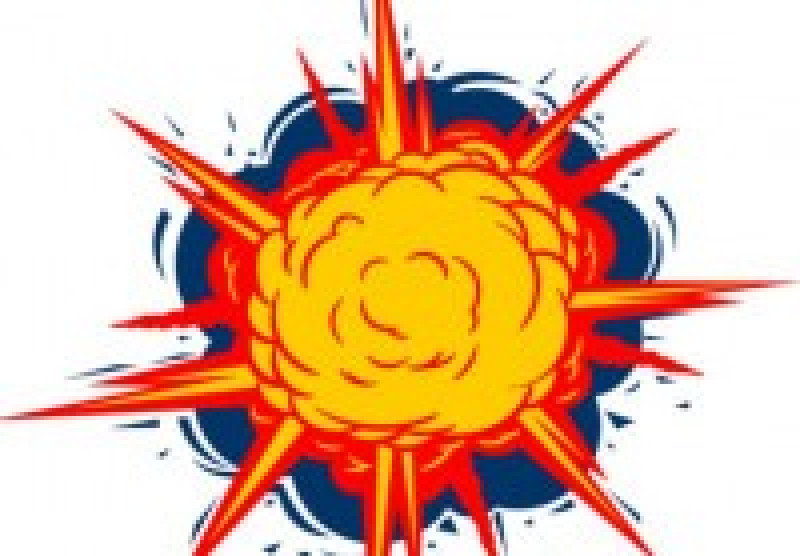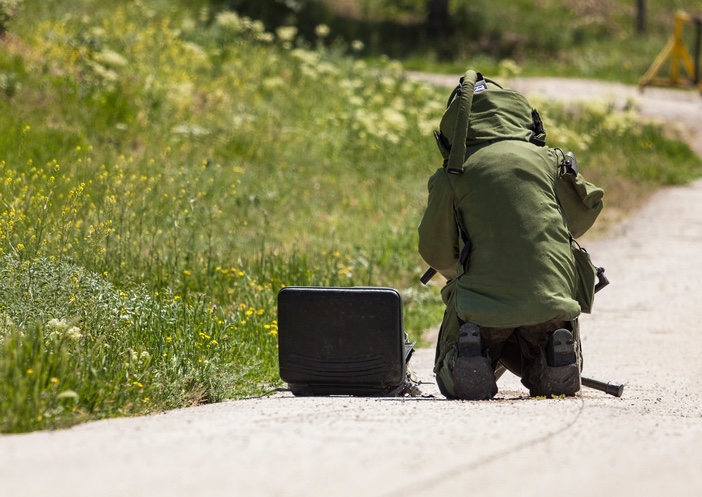
Explosions have the potential to create a multitude of injuries. Therefore, it is important to know how they affect the body in order to treat patients effectively. These types of injuries are most commonly experienced during battle, but have the potential to occur in mines, factories, or anywhere as a result of terrorism. Events involving explosions are complex to manage and may involve multiple patients, not to mention multiple agencies, which can make them a challenge for EMS personnel.
Blast injuries are typically categorized from primary to quaternary. Primary blast injuries are caused by the shockwave from the explosion itself. Shockwave is a rise in air pressure that starts at the explosion site and moves outward. When the wave hits the body it can rupture air-filled organs such as the eardrums, lungs, stomach, and intestines. Secondary blast injuries result from being hit by flying debris. Explosions involving shrapnel can cause rocks, glass, and other debris to fly through the air at high velocities resulting in both penetrating and blunt trauma. Tertiary blast injuries result as a person is launched by the force of the explosion into a stationary object such as the ground or a building. Tertiary blast injuries can cause open or closed head injuries, crush injuries, amputations, fractures, and penetrating or blunt traumas. Lastly, quaternary blast injuries are any other injury that occurs as a result of the explosion. This may include toxic inhalation, burns, radiation, and entrapment.

Factors that affect the extent of injury due to an explosion include distance from the blast, and the space around the blast. The further someone is from the explosion, the less amount of energy they absorb from it. Someone who is 10 ft away has roughly 8 times more blast injury than someone who is 20ft away. Another factor that affects blast injury severity is the surrounding space. If the blast occurs in an enclosed space, the energy bounces around, causing multiple shock waves. Underwater blasts can also cause more injury because water is incompressible and the pressure wave is faster.
Assessment and management of a blast scene begins with scene safety. Do not enter the scene until it has been determined that there is no potential for more explosions, building collapses, or downed power lines. Once the scene has been deemed safe, you may enter, keeping in mind there may by multiple patients and triage may be necessary. As you approach a patient, form a general impression and perform a primary assessment. Check to make sure the airway is patent and if not, open it using the jaw thrust maneuver. Assess breathing for rate and regularity. Do a rapid check of the rest of the body looking for any life-threatening injuries. Significant extremity trauma is a major cause of preventable death. Identify any major bleeding and control it, using a tourniquet if necessary. Transport your patient immediately and perform your secondary assessment en route to the hospital. Recheck the airway and add adjuncts as needed. Ear injuries due to the blast wave can cause patients to vomit, so frequently assess the airway. Assess breath sounds regularly as pulmonary injuries are common with blast injuries, for example, a pneumothorax can develop if air enters the pleural space and causes the lung to collapse. Pulmonary edema can develop as well, making ventilation difficult. Administer oxygen to all blast injury patients regardless of pulse oximetry as their condition can diminish rapidly. Examine the body for other traumas. Keep in mind that the shock wave could have ruptured vital organs causing internal bleeding. Do not administer heavy boluses of fluid if there is suspicion of continued hemorrhaging. Transport the patient to the nearest trauma hospital. In the case of a mass casualty incident, transport decisions may be subject to change. Contact medical control and the hospital for information, unless ICS has been put in place.
- Dozens of courses and topics
- State-specific requirements
- We report to CAPCE in real time


